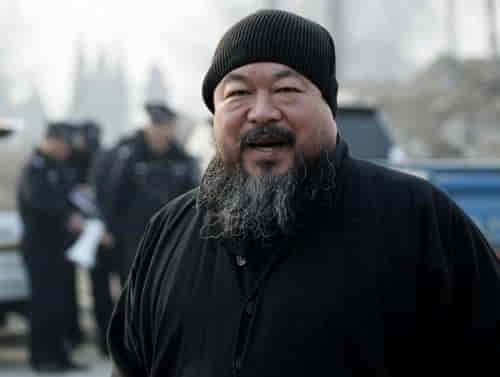
Ai Weiwei is a world-renowned Chinese contemporary artist and outspoken activist whose career has been marked by a fearless critique of political power and social injustice. His bold use of art as a tool for activism has made him a symbol of free expression and resistance, inspiring millions around the globe. Exploring the Ai Weiwei activist journey reveals a compelling story of courage, creativity, and unyielding commitment to human rights and freedom of speech. His work transcends national borders and continues to influence artists and activists worldwide.
Early Life and Artistic Roots
Born in 1957 in Beijing, Ai Weiwei grew up during a turbulent period in Chinese history. His father, Ai Qing, was a famous poet who was persecuted during the Cultural Revolution, an experience that had a profound impact on Ai Weiwei’s perspective on authority and power. Growing up amidst censorship and political oppression deeply shaped his artistic voice and political stance.
After studying at the Beijing Film Academy, Ai Weiwei spent several formative years in New York City during the 1980s and early 1990s, immersing himself in Western contemporary art movements such as conceptualism and minimalism. This period broadened his artistic language and informed his fusion of traditional Chinese craftsmanship with avant-garde techniques. Returning to China, Ai Weiwei began to create work that challenged both artistic conventions and political restrictions, blending personal history with broader social commentary.
Art as a Form of Protest
Ai Weiwei’s art is not merely decorative; it is a powerful form of protest. His installations, sculptures, and documentaries confront social issues such as government corruption, lack of transparency, and human rights abuses. One of his most iconic works, “Sunflower Seeds,” exhibited at London’s Tate Modern, featured over 100 million hand-crafted porcelain seeds, symbolizing the power of the individual within the collective and the impact of mass production on culture.
His activism extends beyond physical artworks. Ai Weiwei is an early adopter of social media as a platform to expose injustices and mobilize support. He openly criticized the Chinese government’s response to the 2008 Sichuan earthquake, highlighting government negligence that led to thousands of deaths. His fearless stance led to his detention and imprisonment by Chinese authorities in 2011, a move that attracted worldwide condemnation and intensified international attention to his cause.
International Impact and Recognition
Despite governmental pressure and censorship in China, Ai Weiwei’s international reputation has soared. His works have been featured in major museums, biennales, and exhibitions around the world, including the Venice Biennale, the Guggenheim Museum, and the National Gallery of Victoria. His art and activism resonate deeply with global audiences who see in his work a universal call for justice, accountability, and freedom.
Ai Weiwei’s documentary Human Flow (2017) is a powerful exploration of the global refugee crisis. Traveling across 23 countries, the film humanizes displaced people’s struggles and challenges governments’ inadequate responses. This project showcases Ai Weiwei’s commitment to humanitarian causes and his belief that art can foster empathy and drive social change.
He has received numerous awards acknowledging his contributions, including the Václav Havel Prize for Creative Dissent and honorary degrees from leading universities such as Harvard and the Royal College of Art.

The Intersection of Art and Activism
Ai Weiwei represents a compelling fusion of creative expression and political engagement. His career challenges the traditional role of the artist as merely a creator of beauty, pushing instead for art that confronts uncomfortable truths and promotes social justice. Through public installations, documentaries, and digital activism, he mobilizes people to question authority and demand transparency.
His use of traditional Chinese materials and methods—like porcelain, wood, and ceramics—combined with contemporary themes reflects a deep respect for cultural heritage while critiquing the political climate. Ai Weiwei’s activism is not just about dissent; it’s about reclaiming history and cultural identity through art.
Current Work and Legacy
Today, Ai Weiwei continues to produce impactful, thought-provoking work. He remains a vocal advocate for freedom of speech, human rights, and refugee support. His recent projects include large-scale installations addressing themes of migration, environmental destruction, and governmental accountability.
The legacy of Ai Weiwei as an activist artist is profound. He has expanded the boundaries of art’s role in society, inspiring a new generation to see creativity as inseparable from political and social responsibility. His courage in the face of repression and his ability to communicate complex ideas through art make him one of the most influential figures of the 21st century.
Outbound Links:
-
Learn more about Ai Weiwei’s activism from the Human Rights Watch: hrw.org
-
Explore Ai Weiwei’s art at the Tate Modern official website: tate.org.uk
-
Watch Ai Weiwei’s documentary Human Flow and its impact: humanflow.com
FAQ
Q1: Who is Ai Weiwei?
A1: Ai Weiwei is a Chinese contemporary artist and activist known for his provocative art and criticism of the Chinese government.
Q2: What kind of art does Ai Weiwei create?
A2: Ai Weiwei creates installations, sculptures, documentaries, and social media projects that address political and social issues.
Q3: Has Ai Weiwei faced government persecution?
A3: Yes, he was detained by Chinese authorities in 2011 and has faced ongoing censorship and harassment.
Q4: What are some famous works by Ai Weiwei?
A4: His “Sunflower Seeds” installation and the documentary Human Flow are among his most acclaimed works.
Q5: Where can I learn more about Ai Weiwei’s activism?
A5: Organizations like Human Rights Watch provide detailed information on his advocacy efforts.




